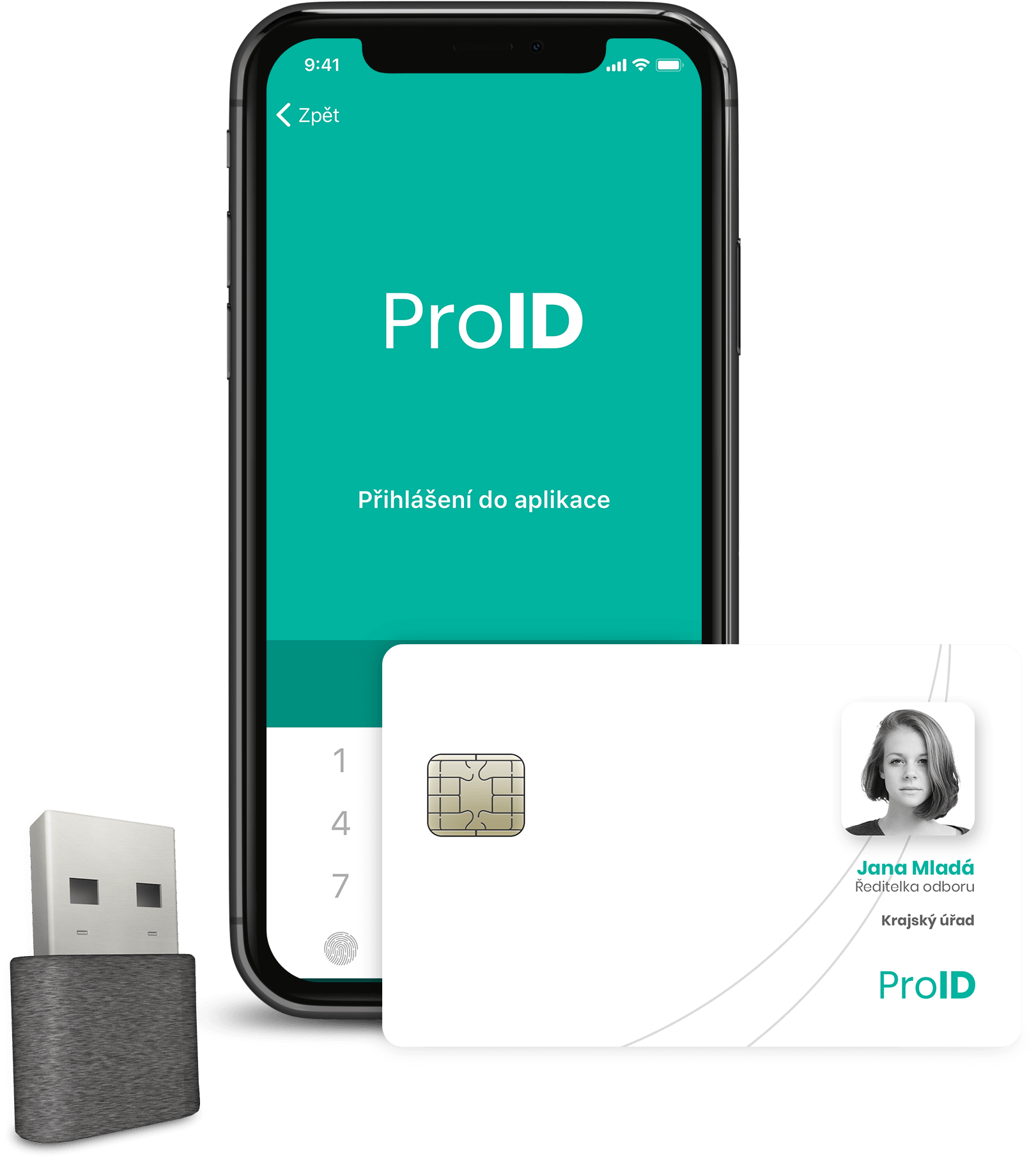MFA and 2FA access
Multifactor login to business systems and clouds
Tools for secure employee login to third-party business applications, clouds, and systems







ProID? Digital key to company data.
80% of hacker attacks are caused by the compromise of employee credentials. Organizations are under constant pressure, the damage caused by hackers reaches hundreds of millions. We develop modern methods for multi-factor login to virtual networks, business systems and applications. Instead of a weak password, the employee uses a resource with a stored digital key. For example, a mobile app. Or a smart card.

Single Sign-On
One tool for everything. All logins to company data in one secure way.

Passwordless
Our methods allow you to log in securely without having to enter a complex password.

Cryptography
Securely store digital keys and encrypt credentials with durable algorithms.

Secure login. From anywhere.
Modern organizations use dozens of systems and internal applications. Our tools are designed to ensure secure login to most of them. Either directly or via supported third-party protocols. They support common office applications (MS Office, G Suite, Salesforce…), SmartCard Logon and many others.
ProID tools options
- Login to third-party applications (on-premise and cloud applications)
- Sign in to apps you develop
- Sign in to admin apps
- VPN login (PKI, RADIUS, OpenVPN)
- Login to applications using PKI certificates
- Sign in to developer consoles (GitHub, etc.)
- Domain login to PCs and laptops
All this using smart cards, USB tokens, or from a mobile phone with the ProID Mobile application.
Multi-factor login options with ProID Mobile


Available tools and methods

Benefits of using ProID multi-factor authentication methods
- Different or complex passwords are replaced by a secure means with a PIN (Passwordless)
- Different authentication tools (smart cards, mobile apps, Bittron) can complement each other – an organization can use multiple types of devices.
- In addition to the authentication tools, we also supply service modules for administrators and ordinary users.
- The server that handles the certificate lifecycle can be physical or virtual.
- The delivered solution can be as a service (SaaS) or installed on-premise.
Are you interested in our solution? Contact us
